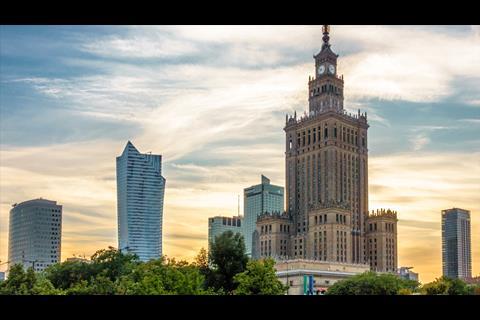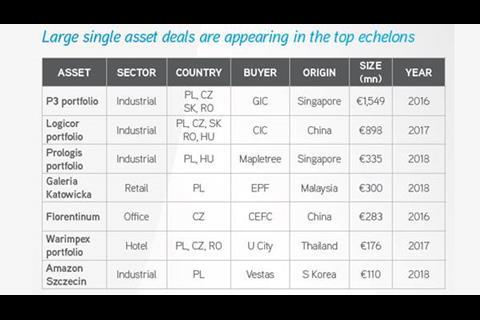East Asian investors have established themselves as major players in the CEE market after taking a 9% share of the region's market in 2018, research by Colliers International shows.
East Asian capital burst onto the scene in 2016, when the total inflow rose from €29 mln to €1.98 bn, and has stayed above the €1 bn level in the subsequent two years.
Poland is the number one destination by far, taking €1.05 bn of the €1.25 bn invested in 2018, suggesting investors are needing liquidity.
So far the bulk of the capital has been spent on portfolio transactions, most notably the acquisition of the P3 logistics portfolio by Singapore's sovereign wealth fund GIC in 2016 for €1.55 bn and the Logicor portfolio, which China's CIC bought in 2017 for €900 mln. The biggest deal in 2018 was the purchase of a Prologis portfolio in Poland and Hungary by Mapletree Singapore for €335 mln.
However, Colliers said there were signs of investors starting to diversify via larger single-asset deals.
The decrease in the total volume in 2018 from €1.39 bn to €1.25 bn was due to the amount of Chinese capital falling to just €60 mln as a result of capital flow restrictions. Singapore took over as the largest single contributor, as it had been in 2016, while Malaysia, South Korea and the Philippines all entered the CEE market for the first time.
One of the attractions of the region is the higher yields compared to domestic markets. Only Tokyo, with an average yield of 3.9%, can compete with the returns to be made in Bucharest (4.1%), Bratislava (4.4%) and Sofia (5.3%).
In the near future Japan, Taiwan and South Korea are likely to be the most fruitful sources of Asian capital in CEE, said Colliers. The size of these countries' economies and the high value of commercial real estate indicate a strong investor base with experience of economic cycles and investing in faster-growing markets.












